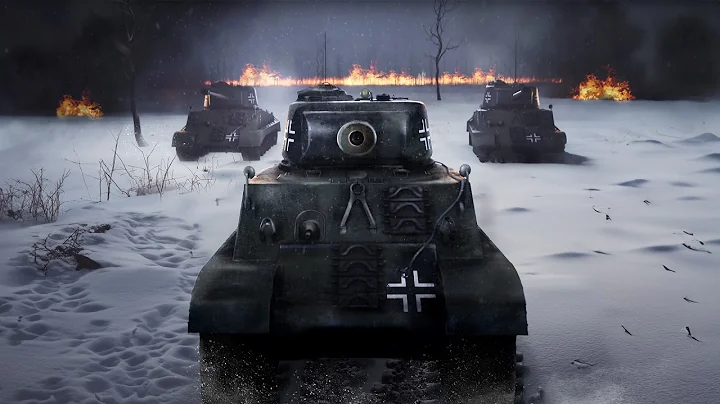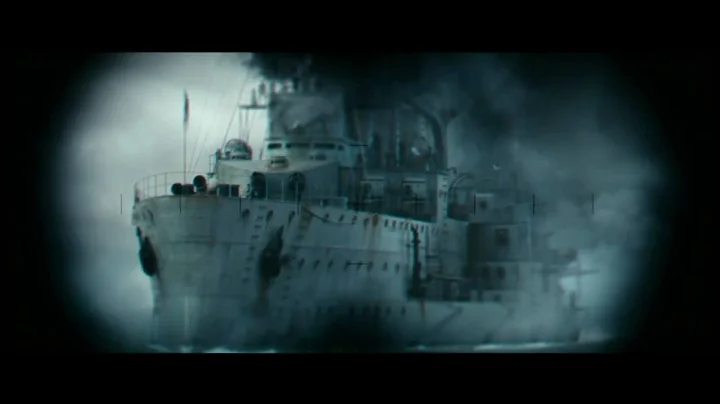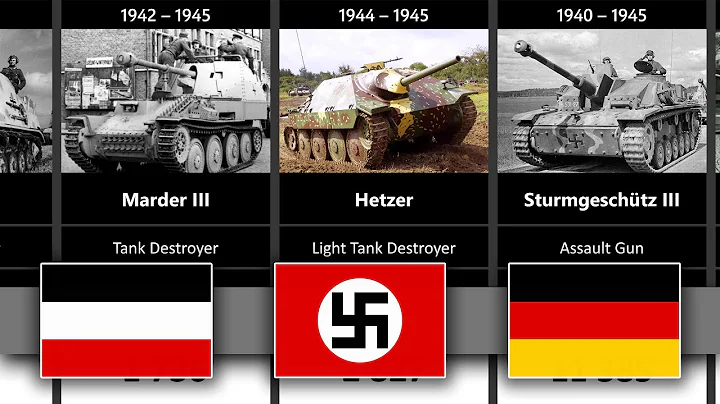The Russian fleet, which received an urgent order, installed a system on its ships designed for land operations. The reason is the latest combat experience. He showed that the main threat to warships was not at all what was previously considered and that available naval air defense systems were not always suitable to deal with them. Air defense does not intercept new cruise missiles and is not suitable for dealing with Bayraktar-type drones. It seems that this time the fleet can protect itself. But only in Russia: in this sense, the fate of NATO countries is completely different. Naked Science will try to figure out what this all means for the future of naval warfare.

Launch of "Torah" from the deck of the frigate "Admiral Grigorovich". Even then, the complex was hit by imitators of the American Harpoon
Military equipment develops according to its own laws, which does not always make sense from the outside. On the contrary, it is often the case that "the country has no prophets": the inventors and designers of a certain country long ago proposed reasonable solutions to cover the weaknesses of its weapons ... but these did not become the series.
An example of this is dark. Russia was the first country in the world (since 1874) to convert its warships to run on oil, which significantly reduced their mass - which in turn made it possible to arm them more powerfully than enemy ships. But this only applies to the Caspian fleet, for obvious reasons: it is the closest source of fuel oil. The importance of this innovation was not sufficiently understood by the naval authorities, as the rest of the Russian fleet switched to liquid fuel only after the British, and they had the honor of doing so already in the 20th century.
"Having no prophet in your own country" is not just a problem for Russia. Rudolf Diesel was German, but the Russian Empire built the first diesel ship in 1903 and Germany only in 1911. In World War German tanks still ran on gasoline, consuming 330 liters per 100 kilometers, compared to the equivalent diesel T-34's consumption of 160 liters (although it was heavier due to the larger armor).
The Third Reich experienced severe fuel crises throughout the war. And the German tanks did not have enough mileage in one refueling station, so much so that on the largest Px.IV in 1944, an extra tank was used instead of the thrown electric turret rotation (yes, the turret had to be rotated manually), but Diesel Inventions on tanks in his homeland were difficult to implement.
After all, there was no shortage of talented engineers in Germany: Ferdinand Porsche, for example, worked hard to build a diesel engine for tanks, but came up with nothing. Throughout the war, concerns about the Maybach failed to convince the military that they needed diesel rather than the super-gluttonous "gasoline."
Unfortunately, something similar happened to the Russian fleet.
How missiles revolutionized naval warfare and how the military thought it would end
In August 1943, the German Do-217E-5 first used the Henschel Hs 293, now known as a cruise missile, against a ship. Purpose: It can only be launched from a distance, like a cruise missile, which, in fact, it is.

model Henschel Hs 293. It is often referred to as a planned bomb, however, this is highly questionable. The presence of the liquid rocket engine (from below) and large wings indicates that we have a primitive cruise missile in front of us. The mass of the warhead is 295 kilograms, and the entire structure is just over a ton. In total, the Germans released more than a thousand, but the main part no longer had the opportunity to use them fully.
She sank the warship Egret, killing 198 people. For a moment, it seemed that the Germans had created a magical weapon. The sinking of Allied ships continued, and in November of that year one such novelty sank a military transport carrying 1,138 Allied troops.
However, British developers soon invented an electronic warfare tool - the Model 650 launcher. It was used from the spring of 1944, making the operation of Hs 293 (which was guided by radio command) almost impossible.It seemed so easy for the Allies that after the war they didn't even try to copy the German design. Until the 1960s, NATO countries did not even consider building any anti-ship cruise missiles.

On August 25, 1943, the British frigate HMS Egret was sunk by a cruise missile. This resulted in the deaths of 198 people on board
A quarter of a century later, history repeated itself. The Soviet Union did not miss the German experience and created fundamentally more effective anti-ship missiles , which were already like modern missiles - with homing heads, flew at low altitudes, and it was difficult to intercept them. On October 21, 1967, the crews of two Egyptian ships (made in the Soviet Union, Komar type) fired four Termit anti-ship missiles (anti-ship missiles) at the Israeli destroyer Eilat, killing 47 people. and sank. The history of Soviet naval warfare seemed to have turned a new page.

Destroyer Eilat
However, what happened next was identical to the Henschel Hs 293 - the only difference was that Israel put anti-ship missiles into service. Taking into account the lessons learned, the Israelis quickly built their small but fast missile boats and - mind you - equipped them with electronic warfare (EW), repeating the trajectory of the British in the forties. In October 1973, the Battle of Latakia broke out in the Yom Kippur War. In it, the Israeli fleet sank several enemy ships with missiles, but suffered no losses - either its electronic warfare systems blinded the termite navigation heads, or the ships, which were considered large NATO ships, simply could not reliably " Capture of "small Israeli ships. Of the 54 "Termites" launched by Arabs , not one hit the target.

After the frigate USS Stark was hit by a pair of French-made Exocet light anti-ship missiles. The ship's radar did not notice either missile, although there was no obvious roughness in the sea and the missile's trajectory was within the area covered by the MK 92 CAS radar. One of the missiles did not explode, but the explosion of the second missile was enough to cause the US ship's electronics to malfunction (as a result, the Iraqi pilot went free). As observers noted, if the seas were rough, the ship would be lost.
At that time, there was some ecstasy in the fleets of the world's developed countries: the "missile threat" of surface ships was eliminated too quickly and easily, leading to a serious underestimation of this threat. Even the sinking of the destroyer HMS Sheffield by an Argentinian cruise missile in the Falklands War did not reverse these sentiments. Like the 37 American sailors aboard the frigate USS Stark who died when they were struck by two Iraqi anti-ship missiles. It is believed that the British simply "overslept" on the arrival of anti-ship missiles, and with actively operating electronic warfare systems and the ship's air defense system , it was very possible to repel cruise missiles.

Traces of the hit "Exoset" in "Stark"
The subsequent Exocet attack in the Falklands War also seems to talk about this. On May 25, 1982, an attempt to attack the USS Hermes actually ended in failure: chaff was fired into the air from the aircraft carrier , and their disoriented missiles were aimed at the Atlantic transport ship without a reflector ( Military transport 15 thousand tons), it was drowned. On May 30, the aircraft carriers Invincible were attacked in a similar manner - again, the chaff deceived anti-ship missiles and they fell into the sea.
The unknown evolution
The sailors became happy early. They overlooked two important points, which together produced a real revolution in the field of naval warfare. First of all, the new generation of anti-ship missiles learned to fly at an altitude of 2-5 meters above sea level in the final stage of the trajectory. This means that it becomes very difficult to spot them at distances of more than 6,000 meters (at which distance the curvature of the Earth combined with crests makes it difficult to detect rockets). In fact, in those cases where the British spotted them, they did so not with the help of radar, but by detecting radar emissions from the Exocet's homing head.

Norwegian cruise missile NSM, photo from Asia Times article "Moscow could be sunk by Norwegian missile"
Secondly, and more importantly, in the following years, rocket scientists finally thought of the passive homing (NSM cruise missile). She can also deceive by firing heat traps instead of dipole radio reflectors. One trouble - these heads are no longer detectable by radar radiation. This means they do not notify the attacked ship of "I'm here, shoot the trap" .These missiles suddenly flew to the ship. If the radar on the ship is not good enough, the ship's air defense will not even have a chance to repel it.
But there is also a "third type": hypersonic cruise (despite their "wings" Extremely small in size) Zircon-type missiles, with active maneuverability in all phases of flight. However, despite their effectiveness, their method of attacking targets is quite different from conventional cruise missiles. In addition, except for Russia, there are currently no such missiles are in service and are unlikely to appear in the near future, which is why it makes no sense to discuss the "third" within the framework of this article.
However, until now, these two factors (not to mention the third ) has been virtually ignored by the world's major fleets. There is an opinion (still held by the most conservative sailors today) that the main part of the cruise missiles may be shot down by radio interference, and that a few penetrating anti-ship missiles will successfully shoot down the ship's Air defense systems.
Experience of Ukraine: ships without the most modern air defense systems no longer make sense
Everything changes in 2022. Despite the presence of S-300 and Osa and electronic warfare systems, the Moscow cruiser could be defeated by anti-ship missiles , which shows that cruise missile development has not stood still.
Their new designs, like the heat-seeking variants of the Norwegian NSM or the Russian Kh-35, do not use radar for targeting, making them difficult to detect, especially is in rough seas. Therefore, anti-ship missiles can attack the ship even before it can use air defense and electronic countermeasures at the same time.
Please note that this is clear in advance. Two French Exocet AM.39 anti-ship missiles , an Iraqi aircraft mistakenly attacked the American Stark frigate in 1987, they are fundamentally different only in that they also have active radar guidance, that is, they can attack "Moscow" more obviously than those missiles. But It is difficult to learn from the mistakes of others: within the domestic fleet, it is no secret that many believe that the Americans simply "missed" the Iraqi attack and that this was due to human factors and not the ubiquity of light anti-ship missiles. It's hard to notice.
It turns out that something urgently needs to be done. It has been proposed to use armored air defense systems on ships. Unlike the Hornets, in addition to the centimeter-range radar, they also have a millimeter wave radar , as well as an optical positioning target tracking system. Thanks to a new generation of radar, Pantsiri can see targets with an effective scattering area of 2 square centimeters. This means that even the Norwegian NSM anti-ship cruise missile, made of composite materials only to reduce radio visibility, is quite distinguishable for Pantsir.

Even before the installation of Pantsir in 2017, a version of Torah without a chassis was installed on the deck of the Russian frigate Admiral Grigorovich. He then successfully hit the target imitator "Harpoon".
The system's capabilities in this regard were clearly demonstrated as early as 2020, when the land-based Pantsir was flown onto the deck of the Black Sea Fleet's large missile boat Shuya. Then he was given a more difficult task than the NSM: the ZRPK had to shoot down the Kornet missile. It's a short-range anti-tank offering that's too light to sink a ship in one hit (but it does damage). Kornet, on the other hand, is smaller than traditional anti-ship missiles and has poorer radio detection capabilities. He also did not use radar homing, that is, he did not hand himself over to the target ship. The height of the missile was chosen at 1-3 meters above the crest, even slightly lower than the NSM or the Russian Kh-35 (3-5 meters).
Still, "Shell" coped. A light missile was shot down and the ground-based air defense system showed it was functioning well on the ship's deck. But in peacetime, no conclusions can be drawn from this. Russia launched a special military operation when there were no "cannonballs" on active ships of the Black Sea Fleet. Things changed dramatically almost immediately after
died in Moscow in April 2022. Satellite images of the suburb of Snake Island (near Odessa) began to show that there were Russian warships with "armor" on the decks. Yesterday, photos of the Russian Type 22160 frigate appeared in Romania’s exclusive economic zone, close to the Ulan and Anna offshore platforms. One of the ships is located at "Tor-M2".

Two Russian ships are in Romania’s exclusive economic zone. Officially, this light frigate is a type 22160 patrol ship with a total displacement of 1,800 tons and an eight-caliber main gun. The ship is located on the left side, with a Ka-29 helicopter on the deck and another Tor-M2 land-based air defense system. The short distance between the two ships is noteworthy: this was probably done so that a Thor could cover them with cruise missiles.
Generally speaking, judging from the success of ground air defense, even a large-scale attack by cruise missiles will fail if there is cover. In April 2018, a coalition of Western countries launched a strike against Syria with 105 cruise missiles. Only 22 of them achieved their goal: 80% did not complete the task for one reason or another. At least 46 of them were hit by Russian and Soviet-made air defense systems.

There are fewer ships seen than their cannons fired from two Romanian oil platforms
This example, as well as the presence of Russian ships in Zmeinoy (they are clearly visible on satellite images) shows that if you use the latest generation of air defense systems, Then it is quite possible to counter the threat of cruise missiles. Of course, taking into account the incomplete integration of land systems on board ships, for the time being this will require them to move in small groups (so that neighbors in the group are covered from one side of the dead zone), but, Still, it's very realistic.
Let's go back to the photo of the Black Sea Fleet frigate with "Tors" on the deck. Why Torah? Why not the same "shell"?
How to choose land defense for naval ships
At first glance, this is a very difficult question. "Armor" has a range of 20 kilometers, while "Thor" has a range of only 16 kilometers. The altitude is also lower: 12 kilometers compared to 15 kilometers in "Shell". Most Thor radars are also not very sensitive to small targets (effective scattering areas below 5 square centimeters are already a problem). In addition, the pure missile "Thor" can no longer hit the enemy at a distance of up to one kilometer: the missile needs a significant distance from it to successfully target and work.
"Shell" is different from "Thor" in that it has two double-barreled guns with a total rate of fire of 4000-5000 rounds per minute. Yes, it is difficult for him to deal with small UAVs at a distance of 3-4 km (however, this applies to any anti-aircraft gun system). However, cruise missiles are not small drones. The dead zone of missiles begins at 1000 meters from the protected ship: it is obvious that at such a distance the probability of hitting anti-ship missiles and guns is relatively small. It seems the lack of cannons on the Thor is no less problematic than its range, which is 20% lower than the Shell's.

"shells" within the shooting range. Although its artillery is not always able to cope with the defeat of small UAVs at a distance of 1.2 kilometers, the area of cruise missiles is many times larger than that of UAVs, so it is much easier for the artillery of the complex to work with them.
Finally, the experience of using "Shell" in combat, first in Syria and then in Ukraine, looks more impressive than "Thor". As of April 4, 2022, in the military special operations zone, only one machine of the Pantsir complex has shot down 7 aircraft and 1 helicopter. It is understood that Thor had no such example at the time.
But taking a closer look, it is obvious that it is more logical to choose "Thor" as the protection of ships at sea. There is currently no cruise missile with an effective scattering area less than 5 square centimeters. It does not matter that the altitude is lowered by a few kilometers to protect against foreign anti-ship cruise missiles. After all, unlike the Russians, they do not attack from high altitudes, they still do not fly above tens of meters.
has a minuscule range of 4 kilometers. First, there is almost no chance of detecting a low-flying cruise missile at a distance of 20 kilometers anyway. Secondly, the self-confidence destruction zone of cruise missiles is, first of all, only 12 kilometers for the basic modification of "Pantsir", which is for the relatively outdated model of "Tomahawk". Indeed, the same is true for Thor (for whom the failure of confidence in these goals does not come from the 16km limit either).
Long range and ceilings are important when fighting slow-flying Bayraktar-type drones: here, the Pantsir can clearly handle longer ranges than the Thor. But "Bayraktar" has nothing to attack Russian ships from 16-20 kilometers: it does not have enough long-range missiles . Therefore, in fact, for the needs of ships, "Thor" is not bad in this sense.

The Pantsir missile weighs 94 kilograms in a transport and launch container (TLC). But the Thor - 163 kg, on land is its obvious disadvantage
But the Thor has an advantage: it carries 16 missiles instead of 12 like the Pantsir. He also has a more stable (important at sea) platform. Finally, its missiles are more "kinetically armed." On land, this is usually a bigger problem: they are heavier and larger than the "shell" ones. However, facing a cruise missile like the Norwegian NSM - and one that knows how to maneuver in the final leg of the route to avoid the ship's air defenses - more power, at least in theory, means a serious increase in downing target missiles.
What should be the ideal naval air defense system in the future?
Yes, despite the arrival of American Harpoon anti-ship missiles in Ukraine, the presence of land-based armor and Thors on the decks of Russian warships near the Serpentine allowed them to avoid new losses. The island and its surroundings are within the range of Western anti-ship missiles, and there are no new shipwrecks there, it is clear that the "non-sailor" complex is very effective.
Above, we have explained why temporary (ground) air defense systems were hastily installed on the ships of the Russian fleet, and why they did not receive special naval versions at the factory. But the story also raises other questions. In particular: Will there be enough improvisation in the future?

A marine version of "Shell" already exists. But is it optimal in all aspects? Yes, a reserve of 40 missiles looks great, but only eight are ready for use at a time, and anti-ship missiles fly so fast that there may not be enough time to reload. In addition, the dead zone where its anti-aircraft missiles cannot ensure the interception of enemy anti-ship missiles is one and a half kilometers away, which is significantly larger than the Thor. The naval version does not yet have the hypersonic missile of the Pantsir-SM, which is why its range does not exceed 20 kilometers instead of 40 kilometers. Yes, and there are questions about the choice of guns for destroying enemy anti-ship missiles in nearby areas.
seems unlikely. Let's think about it: "Thor" on the deck of a ship works completely autonomously. Its own radar is its only "eyes." This means that in the direction of the ship's bow, he is effectively blind: the radar does not "see" the superstructure. This can be solved by mounting the radar on the superstructure, while the missile launchers are placed separately in the lower part of the ship. Apparently, this was supposed to be done for the air defense of future "native" ships.
In addition, the Tora self-propelled gun weighed 32 tons, most of which was the chassis, on the deck of the ship, and was just ballast. With a common deck installation of the same size as the entire self-propelled gun , you can deal with ship space and carrying capacity more reasonably.
A significant drawback of the land "Thor" is the 1 km dead zone.Any closer than this milestone and the missile will not have time to fire on the target, after all the last kilometer is about one-sixth of what carrier-based air defense can confidently see with a truly modern (i.e. truly low-flying) cruise missile. It's obvious that cannon is needed for the last mile. But is it the same as "shell"? This is questionable.
Yes. It's much faster than its Western counterpart. Yes, the combined output of the two twin-barreled 30mm guns is 80 rounds per second. But the RCC flew about 3,5 seconds in the last kilometer. To stay in it, the "anti-missile" artillery would need a rate of fire of over 80 rounds per second. The most sensible choice seems to be a pair of Soviet GSh-6-23M.

GSh-6-23 weighs 76 kg, which is 16 kg lighter than the Soviet 20 mm Vulcan cannon M61 Vulcan. If the M61 fires only 100 rounds per second (in the ship version of the Phalanx CIWS, against anti-ship missiles - only 75 rounds per second), then the GSh-6-23M - 165 rounds per second.
Its 200 gr armor-piercing rounds can even penetrate the titanium hull of the winged Norwegian NSM. But due to the smaller caliber, the design was very successful. It has the highest rate of fire in human history - 165 rounds per second per gun. A pair of these (rather than the pair of 30mm ones on the Pantsir) will fire 330 rounds per second, four times the rate of the Pantsir cannon. Even at the last mile, such a device can fire a thousand rounds at the speed of an enemy cruise missile. This would greatly increase the chances of intercepting it in the most dangerous areas, since the distance would be so short that the missile would no longer be helpful.
Finally, not all is well with Thor's missile part. Its 16 missiles are absolutely insufficient against a serious enemy. Yes, Ukraine has problems with anti-ship missile carriers. Yeah, she's not going to fire 40 of them at the same time on one target. But it is known that Russia is not building a fleet for operations in Ukraine. It has an entirely different main adversary - NATO.
The Russian Su-34 carries 8 Kh-35 anti-ship missiles with a range of 260 kilometers. Apparently, NATO is likely to have aircraft carrying eight anti-ship missiles each. If two of them launch a Russian frigate with Thor, it may still be at the limit of its capabilities, but to fight back. What will happen if 3 anti-ship missiles and 24 missiles participate in the attack? What if these are not American Harpoons, but NSMs with the real danger of passive homing that cannot detect themselves? It is useless to impose radio interference on such a rocket. And Thor would not be able to shoot down 24 of them: his own anti-missiles were one and a half times fewer.
The problem is not only the number of missiles, but also the number of channels to control them. The air defense system can simultaneously fire on enemy targets with controlled access. There are only four Thors, which is logical: before Abqaiq, there was no need for more on land. At sea, the number of control channels should be higher. Furthermore: The ideal ship air defense system would be a ship equipped with hypersonic missiles (speed exceeding Mach 5), such as Pantsir-SM. They are about twice as fast as Thor missiles. This means they will have time to hit twice as many enemy cruise missiles with the same number of control channels.
It is absolutely clear that now, before receiving complexes with a large number of hypersonic missiles, the air defense systems of almost all modern naval ships will not be able to repel a serious attack from dozens of cruise missiles at the same time. However, you need to learn how to do this, otherwise surface ships will suffer the fate of WWII battleships. In other words, they will spend a lot and suffer heavy losses, but they will not be able to determine the outcome of the naval battle.

"Shell-M", installed on the frigate "Shkval" project 22800 (total displacement 870 tons). Shkval's primary weapon is an eight-caliber. Unfortunately, most of our Pantsir-M frigates are not equipped with this.
In offshore waters, it is unthinkable for them to compete with aircraft: one Su-34 costs tens of millions of dollars, and eight anti-ship missiles cost several million. But even a small frigate costs hundreds of millions of dollars. It carries anti-ship missiles - if the design is successful - up to eight.Most of our frigates carry four, and there are many US ships (LCS) of the same size - until recently, zero. This happens because fleets around the world pay insufficient attention to cruise missiles.
It turns out that the aircraft in its current form is cheaper than a ship, but much faster, while carrying just as many, if not more, anti-ship missiles. To remain combat-worthy in an offshore context, the ship needed something that aircraft simply couldn't afford. For example, effective and numerous air defense systems (there is simply no place for them on the aircraft).
A Russian-made frigate displacing 1,000 tons may carry not 16 Tor or Pantsir-SM missiles (with a total weight of less than 3 tons), but dozens (with a total weight of up to 10 tons). This is very logical (and has already been done for the naval version of the Pantsir carrying 40 missiles). After all, on land the Tora is also rarely used alone - when covering serious targets we more often talk about pairs and pairs of such vehicles, which have a total of 32 or 64 missiles.
A ship displacing 1000 tons is no less important than two or four Thors covering the land. Therefore, he and the "umbrella" should be kept large. Do we have to push the rest of the systems of Russian frigates and corvettes? certainly. But it is better not to have a 76-mm cannon (when was the last time such a ship sank at least one warship?) than to drown, because the cover of your anti-ship missiles turned out to be worse than that of marching regular army troops.
Of course, in order to use dozens of hypersonic missiles, the ship's air defense system does not need four guidance channels like Thor or land-based armor, but at least twice as many. But all of these are solvable problems. Moreover, if not solved, the use of surface ships within the range of enemy anti-ship missiles will inevitably turn into the same massacre as the attempt to use battleships within the range of enemy aircraft carriers in World War II.
It seems that the fleet has no choice but to build a thunder god for itself, which is several times more powerful than the thunder god on land.





















